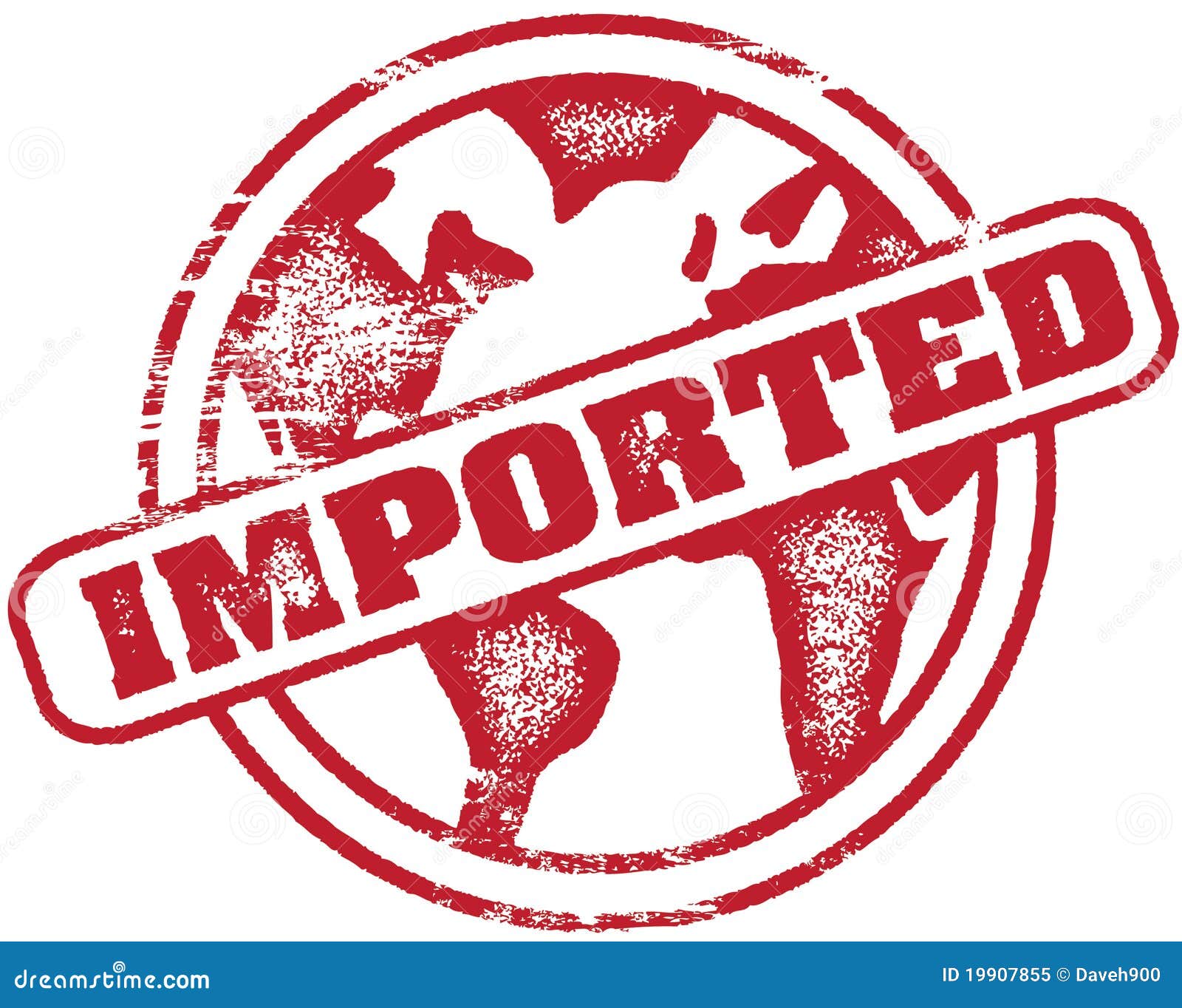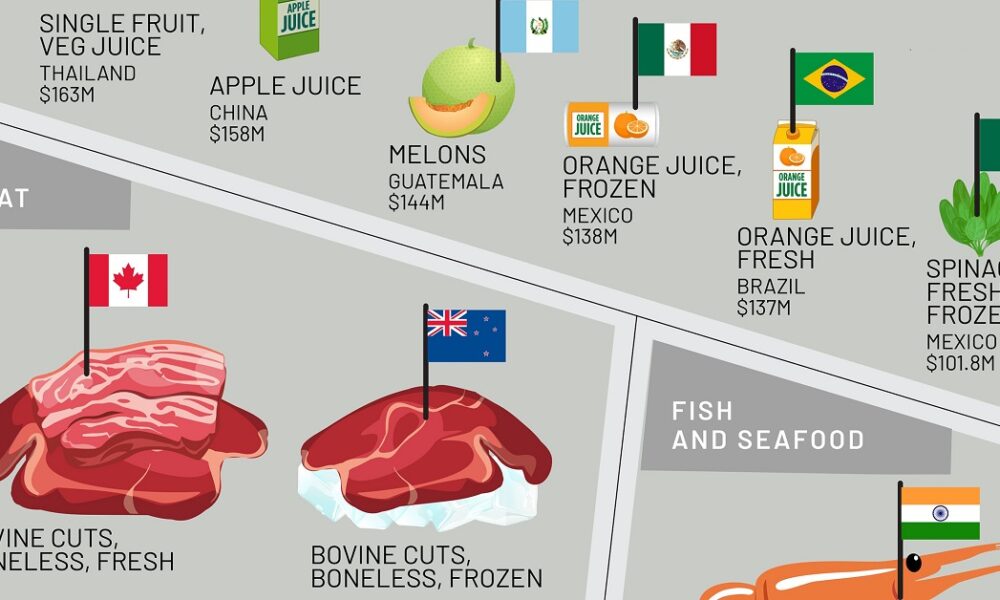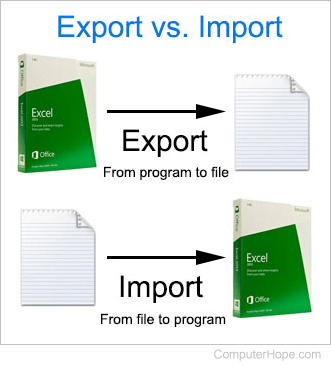Imported Car Brands: Navigating the Global Automotive Landscape cars.truckstrend.com
In an increasingly interconnected world, the automotive market has transcended national borders, offering consumers an astonishing array of choices from across the globe. "Imported Car Brands" refers to vehicles manufactured by companies headquartered in one country but sold and distributed in another. From the precision engineering of Germany to the innovative technology of Japan, the luxurious craftsmanship of Italy, and the robust utility of American brands sold abroad, imported cars represent a significant and often aspirational segment of the global automotive industry. Their presence enriches the market, providing diversity, fostering innovation, and catering to a wide spectrum of consumer preferences that domestic offerings might not fully satisfy. Understanding the nuances of imported car brands is crucial for anyone looking to make an informed decision in today’s diverse automotive landscape.
The Global Tapestry of Imported Car Brands
Imported Car Brands: Navigating the Global Automotive Landscape
The world of imported cars is a rich mosaic, with brands often categorized by their country or region of origin, each bringing its unique philosophy and engineering prowess to the fore.
- European Brands: Renowned for their blend of luxury, performance, and sophisticated design. German brands like Mercedes-Benz, BMW, Audi, and Porsche are synonymous with precision engineering, driving dynamics, and premium interiors. Italian marques such as Ferrari, Lamborghini, and Maserati epitomize passion, speed, and exotic styling. Swedish Volvo is celebrated for its unwavering commitment to safety and minimalist design, while British Land Rover (now owned by Tata Motors) excels in luxury SUVs and off-road capability. French brands like Peugeot and Renault offer distinct styling and comfortable rides, often focusing on efficiency and practicality.
- Asian Brands: Characterized by reliability, efficiency, and advanced technology. Japanese giants like Toyota, Honda, Nissan, Mazda, and Subaru have built formidable reputations for durability, fuel economy, and strong resale values. Their luxury offshoots, Lexus (Toyota), Acura (Honda), and Infiniti (Nissan), compete directly with European premium brands, offering refined comfort and cutting-edge features. South Korean brands, Hyundai and Kia, have rapidly ascended, known for their aggressive styling, value-for-money propositions, comprehensive warranties, and rapid technological advancements, including a strong push into electric vehicles.
- American Brands (Imported to other markets): While some American brands like Ford and Chevrolet have significant global manufacturing footprints, their distinct models or even the entire brand can be considered "imported" in markets where they aren’t domestically produced. For instance, Jeep is often imported into many countries, revered for its iconic off-road capabilities. Tesla, though a relatively new player, is a prime example of an American brand that is heavily imported globally, redefining the electric vehicle market.
Each region contributes distinct flavors, from robust engines and luxurious cabins to efficient powertrains and advanced driver-assistance systems, offering a truly global smorgasbord of choices.
Why Choose an Imported Car? The Allure and Advantages

The decision to opt for an imported vehicle is often driven by a compelling set of advantages that go beyond mere transportation.
- Diversity and Choice: Imported brands dramatically expand the options available to consumers. They offer models, body styles, and performance levels that might not be produced domestically, allowing buyers to find a vehicle that perfectly matches their niche requirements or desires.
- Innovation and Technology: Many imported brands, particularly those from technologically advanced nations, are at the forefront of automotive innovation. They often introduce new safety features, infotainment systems, powertrain technologies (like advanced hybrids or EVs), and design trends before they become mainstream in other markets.
- Performance and Driving Dynamics: European brands, in particular, are celebrated for their sophisticated engineering that translates into superior driving dynamics, precise handling, and powerful engines. Whether it’s the thrill of a German sports sedan or the agile handling of a Japanese hot hatch, imported cars often deliver a more engaging driving experience.
- Luxury and Prestige: Certain imported brands carry an inherent aura of luxury, prestige, and exclusivity. Owning a vehicle from a renowned international marque can be a status symbol, reflecting discerning taste and an appreciation for fine craftsmanship and heritage.
- Resale Value (for select brands): While not universal, many popular imported brands, especially those known for reliability like Toyota and Honda, or premium brands like Porsche and Mercedes-Benz, tend to hold their value exceptionally well due to their strong reputation, desirability, and global appeal.
- Fuel Efficiency and Environmental Standards: Many imported vehicles, particularly those from Europe and Japan, are designed to meet stringent global emissions and fuel economy standards, often offering more efficient powertrains than some domestically focused alternatives.

Key Considerations Before Buying an Imported Car

While the allure of imported cars is strong, a pragmatic approach requires careful consideration of several factors before making a purchase.
- Cost Beyond Purchase Price: Beyond the sticker price, imported cars can incur additional costs such as import duties, taxes (VAT/GST), and shipping fees, which can significantly inflate the final price.
- Maintenance and Parts Availability: While major brands have well-established networks, finding specialized parts for less common imported models or older vehicles can be challenging and expensive. Parts may need to be shipped internationally, leading to delays and higher costs.
- Service Network and Expertise: Ensure that there is a robust and reliable service network for the brand in your region. Specialized mechanics with the right tools and training are crucial for proper maintenance and repairs, especially for high-tech or luxury imports.
- Warranty Coverage: Understand the warranty terms. An international warranty might not be fully honored in your country, or it might have different terms and conditions. Always clarify local warranty support.
- Resale Market and Depreciation: While some imports hold value well, others, especially less common models or those with high maintenance costs, might depreciate faster due to a smaller local buyer pool or perceived higher running costs.
- Regulations and Compliance: Vehicles must meet local safety and emissions standards. Official imports are typically compliant, but "grey imports" (vehicles imported outside official distribution channels) might require modifications to meet local regulations, which can be costly and complex.
- Insurance Premiums: Due to factors like higher repair costs (due to specialized parts/labor), perceived higher risk, or the vehicle’s luxury status, insurance premiums for imported cars can sometimes be higher than for comparable domestic models.
Navigating the Imported Car Market: A Buyer’s Guide
Making an informed decision about an imported car involves thorough research and a systematic approach.
- Define Your Needs and Budget: Before looking at brands, determine what you need in a car (size, performance, fuel economy, features) and set a realistic budget that includes the purchase price, taxes, insurance, and anticipated running costs.
- Research Brands and Models: Dive deep into specific brands and models that pique your interest. Look for reliability ratings (e.g., from J.D. Power, Consumer Reports), owner reviews, and long-term cost of ownership data.
- Assess Local Support: Crucially, verify the availability and quality of the local dealership and service network for your chosen brand. A strong local presence ensures easier access to parts, warranty support, and qualified technicians.
- Test Drive Extensively: Never buy an imported car without a thorough test drive. Pay attention to how it handles, accelerates, brakes, and how comfortable the interior is. Ensure it suits your driving style and local road conditions.
- Understand Trim Levels and Specifications: Global models often have different specifications and trim levels for different markets. Ensure the vehicle you’re considering has the features and safety standards you expect for your region.
- Pre-Purchase Inspection (Especially for Used Imports): For used imported vehicles, a comprehensive pre-purchase inspection by an independent, trusted mechanic specializing in that brand is highly recommended to uncover any hidden issues.
- Explore Financing and Insurance Options: Get quotes for financing and insurance early in the process. Some lenders might have different terms for imported vehicles, and insurance companies might charge higher premiums.
- Clarify Import Status (Official vs. Grey Market): Always ensure you are purchasing an officially imported vehicle through authorized channels. Grey imports, while sometimes cheaper, can lead to significant headaches regarding compliance, parts, and warranty.
Types and Categories of Imported Car Brands
Imported car brands can be broadly categorized based on their market positioning and primary focus:
- Luxury/Premium Brands: These brands prioritize opulent interiors, advanced technology, powerful engines, and superior comfort. Examples include BMW, Mercedes-Benz, Audi, Lexus, Porsche, Volvo, Land Rover, Maserati, and Infiniti. They cater to buyers seeking prestige, performance, and refined experiences.
- Performance/Sports Brands: Focused on exhilarating driving experiences, high horsepower, and agile handling. This category includes exotic brands like Ferrari, Lamborghini, and McLaren, as well as high-performance divisions of mainstream brands such as BMW M, Mercedes-AMG, Audi Sport, and Porsche. Even some Japanese imports like the Nissan GT-R or Subaru WRX fall into this segment due to their performance focus.
- Mainstream/Volume Brands: These brands offer a wide range of vehicles, from sedans and hatchbacks to SUVs and minivans, focusing on reliability, practicality, fuel efficiency, and value. This is where you find the largest market share, with brands like Toyota, Honda, Volkswagen, Hyundai, Kia, Mazda, and Nissan.
- Niche/Specialty Brands: These cater to specific segments or offer unique propositions. Examples might include Mini (for compact, stylish cars), Jeep (for dedicated off-roaders), or smaller, boutique manufacturers.
Challenges and Solutions for Imported Car Owners
While the benefits are numerous, owning an imported car can present specific challenges, though most have practical solutions.
- Challenge: Parts Availability & Cost: For less common models or very specific components, parts might be difficult to source quickly or come with a hefty price tag due to import duties and shipping.
- Solution: Research parts availability and common repair costs before buying. For owners, establishing a relationship with a reputable specialist parts supplier or joining owner forums can help identify sources.
- Challenge: Specialized Mechanics: High-tech or exotic imported vehicles often require mechanics with specific training, tools, and diagnostic equipment.
- Solution: Seek out dealerships or independent workshops that specialize in your car’s brand. Check for certifications and positive reviews. Owner clubs and online communities are great resources for recommendations.
- Challenge: Depreciation (for some models): While premium brands often hold value, some imported models, particularly those that are less popular in a specific market, might depreciate faster than domestic equivalents.
- Solution: Choose models with strong local demand. Maintain meticulous service records and keep the vehicle in excellent condition to maximize resale value.
- Challenge: Language/Manuals: Older grey imports might come with manuals in a foreign language, and infotainment systems might not support local languages or navigation.
- Solution: Most modern vehicles offer multi-language support. For older cars, online communities or the manufacturer’s global website might offer digital manuals in English or your preferred language.
- Challenge: Compliance Issues (Grey Market Imports): Vehicles imported outside official channels may not fully comply with local safety, emissions, or even lighting regulations, requiring costly modifications.
- Solution: Always buy from authorized dealerships or reputable importers who guarantee full compliance. If considering a grey import, factor in the potential cost and complexity of modifications and inspections.
Imported Car Brands: Representative Starting Price Ranges (USD, Estimated)
Please note: Prices are highly variable based on country, local taxes, trim level, optional features, and market conditions. These are general estimated starting price ranges for a typical model within the brand’s lineup, primarily for new vehicles in a major market like the US or Europe.
| Brand | Origin | Category | Example Starting Price Range (USD) | Key Focus |
|---|---|---|---|---|
| Toyota | Japan | Mainstream | $22,000 – $35,000 | Reliability, Fuel Efficiency, Value |
| Honda | Japan | Mainstream | $23,000 – $37,000 | Reliability, Performance, Practicality |
| Volkswagen | Germany | Mainstream | $25,000 – $45,000 | German Engineering, Refinement, Technology |
| Hyundai | South Korea | Mainstream | $20,000 – $40,000 | Value, Design, Technology, Warranty |
| Kia | South Korea | Mainstream | $19,000 – $39,000 | Value, Styling, Features, Warranty |
| Mazda | Japan | Mainstream/Near-Premium | $24,000 – $40,000 | Driving Dynamics, Premium Feel, Design |
| Subaru | Japan | Mainstream | $25,000 – $40,000 | AWD, Safety, Reliability, Outdoor Lifestyle |
| Nissan | Japan | Mainstream | $21,000 – $38,000 | Value, Practicality, Innovation |
| BMW | Germany | Luxury/Performance | $45,000 – $150,000+ | Driving Dynamics, Luxury, Technology |
| Mercedes-Benz | Germany | Luxury/Performance | $48,000 – $180,000+ | Luxury, Comfort, Innovation, Prestige |
| Audi | Germany | Luxury/Performance | $40,000 – $120,000+ | Design, Technology, Quattro AWD, Refinement |
| Lexus | Japan | Luxury/Premium | $40,000 – $90,000 | Reliability, Refinement, Comfort, Service |
| Volvo | Sweden | Luxury/Premium | $40,000 – $75,000 | Safety, Scandinavian Design, Comfort |
| Porsche | Germany | Luxury/Performance | $65,000 – $200,000+ | Sports Car Performance, Luxury, Engineering |
| Land Rover | UK | Luxury SUV/Off-Road | $55,000 – $130,000+ | Luxury SUV, Off-Road Capability, Prestige |
| Mini | UK (BMW) | Niche/Stylish Compacts | $28,000 – $45,000 | Iconic Design, Go-Kart Handling, Personalization |
| Ferrari | Italy | Exotic Performance | $250,000 – $500,000+ | Exotic Supercar, Performance, Heritage |
| Lamborghini | Italy | Exotic Performance | $220,000 – $500,000+ | Exotic Supercar, Bold Design, Performance |
| Tesla | USA | Electric/Tech (Imported) | $40,000 – $100,000+ | Electric Vehicles, Technology, Performance |
Frequently Asked Questions (FAQ) about Imported Car Brands
Q1: Are imported cars more expensive to maintain than domestic cars?
A1: It depends on the brand and model. Mainstream imported brands like Toyota, Honda, Hyundai, and Kia often have comparable maintenance costs to domestic brands due to widespread parts availability and service networks. Luxury or exotic imported brands (e.g., Mercedes-Benz, BMW, Ferrari) generally have higher maintenance costs due to specialized parts, labor, and technology.
Q2: Do imported cars have good resale value?
A2: Many imported brands, particularly those known for reliability (e.g., Toyota, Honda, Lexus) or prestige (e.g., Porsche, Mercedes-Benz), tend to have strong resale values. However, less common or older models, or those with very high running costs, might depreciate faster in certain markets.
Q3: Is it difficult to find parts for imported cars?
A3: For officially imported cars from major brands, parts availability is generally not an issue, as they have established supply chains and dealership networks. For older models, niche brands, or "grey market" imports, finding specific parts can be more challenging and might require ordering from overseas, leading to delays and higher costs.
Q4: Are imported cars safer than domestic cars?
A4: Safety is not determined by a car being imported or domestic, but by the manufacturer’s commitment to safety standards and the vehicle’s design. Many imported brands, especially European and Japanese ones, are leaders in automotive safety technology and perform exceptionally well in crash tests (e.g., Euro NCAP, IIHS, NHTSA). All vehicles officially sold in a country must meet its specific safety regulations.
Q5: What’s the difference between an official import and a grey import?
A5: An official import is a vehicle brought into a country by the manufacturer’s authorized distributor, specifically designed and modified (if necessary) to meet local regulations (emissions, safety, etc.), and comes with full warranty and service support. A grey import (or parallel import) is a vehicle imported by an independent dealer or individual outside the manufacturer’s official distribution channels. These cars may not fully comply with local regulations and might not have official warranty or service support, potentially leading to compliance issues, difficulty finding parts, and higher costs for modifications or repairs.
Conclusion
Imported car brands are more than just vehicles; they are a testament to global innovation, diverse design philosophies, and engineering excellence. They offer consumers an unparalleled breadth of choice, from reliable daily drivers to exhilarating performance machines and opulent luxury cruisers. While the allure of these international offerings is undeniable, a well-informed approach is paramount. By carefully considering factors like cost, maintenance, local support, and regulatory compliance, buyers can confidently navigate the rich and varied landscape of imported cars, ultimately choosing a vehicle that not only meets their needs but also reflects their unique taste and aspirations. In an era of increasing globalization, imported car brands will continue to shape and enrich the automotive experience worldwide.

